Body wall
- The body wall of earthworm has an external covering of a thin, flexible cuticle.
- The cuticle has many perforations, though which epidermal glands release their secretions.
- The epidermis consists of
- Columnar cells (supporting cells)
- Glandular cells (which secrete mucus)
- Sensory or receptacle cells (receives various types of stimuli)
- Basal cells (present between columnar cells)
- Setal sacs are also present in the epidermis.
- There are two layers of muscles beneath the epidermal layer.
- The outer layer is composed of circular muscles.
- The inner layer is made of longitudinal muscles.
- The innermost layer of body wall is the coelomic epithelium.

Digestive system
- The digestive system is complete with mouth and an anal opening.
- Thus, the body plan is tube-within-tube plan.
- The mouth opens into the buccal cavity (segments 1 and 2).
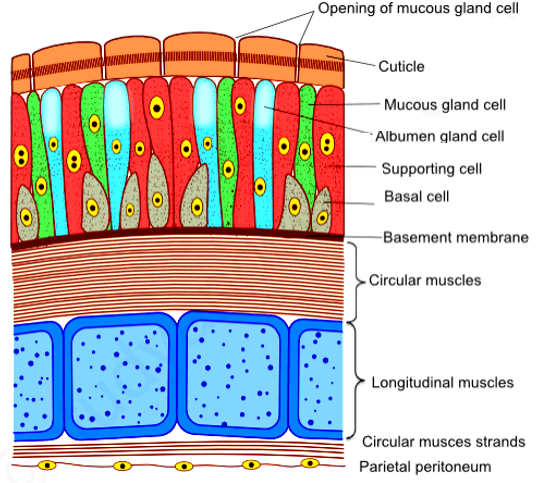
- The buccal cavity leads into a thick muscular pharynx which occupies the 3rd and 4th segments. It is surrounded by pharyngeal glands.
- The pharynx follows a small narrow tube called oesophagus (5-7 segments), which continues into a muscular gizzard (8-9 segments).
- Gizzard helps in grinding the food which is mostly soil particles, decaying leaves and other organic matter.
- The stomach extends from 9-14 segments.
- Stomach contains calciferous glands, which can neutralise the humic acid present in humus.
- Intestine extends from 14nth segment to last segment.
- In the 26th segment, a pair of short and conical intestinal caecae projects from the intestine.
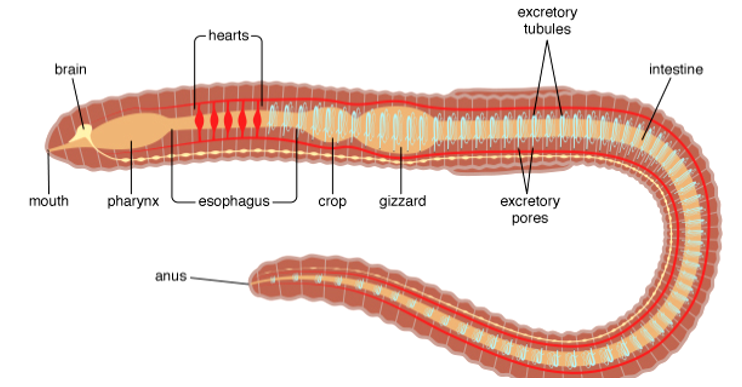
- The end parts of intestine possess several internal median folds of dorsal wall called typhlosole. This increases the effective area of absorption in the intestine.
- The alimentary canal ends in a small rounded aperture called anus.
Excretion
- The excretory organs are coiled tubules called nephridia.
- They are present in each segment (except 1 and 2).
- There are 3 types of nephridia:
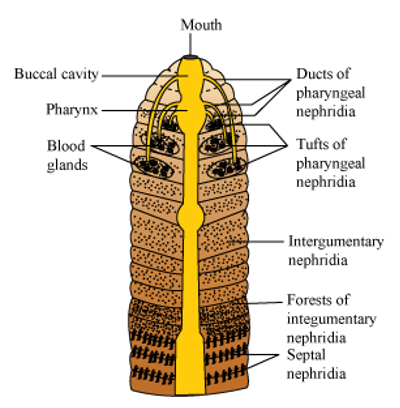
- Pharyngeal nephridia: They are found in pairs in the fourth fifth and sixth segments.
- Integumentary nephridia: These are found attached to the inner surface of the body wall from the third segment the last segment.
- Septal nephridia: These are found from segment 15 to the last segment. They open into the intestine.
- Functions of nephridia: Regulation of volume and composition of the body fluids.
- Structure of nephridia:

- Initial part of nephridium is a funnel shaped structure called nephrostome. It collects excess fluids from the coelomic chamber.
- The funnel leads to a tubular part called nephric tube which delivers the collected wastes into the digestive tube.
- The wastes are expelled from the tubes through an external opening called nephridiopore.
.
Nervous system
- The Nervous system in earthworm consists of
- A cerebral ganglion (circumpharyngeal nerve ring)
- A double ventral nerve cord (extending from the fourth segment to the last segment)
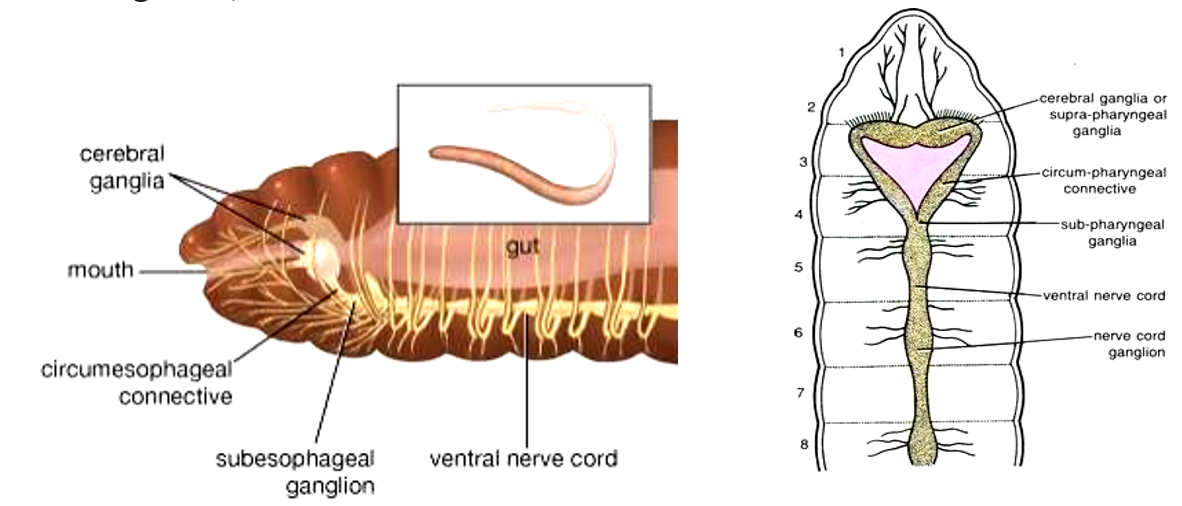
- The nerve cord bears segmental ganglia from which paired lateral nerves arise.
- The nerve cord code in the anterior region (third and fourth segments) bifurcates, encircles the pharynx laterally enjoins the cerebral ganglia dorsally to form a nerve ring.
Respiration
- Earthworms don’t have specialised breathing devices.
- Gas exchange occurs between the bloodstream and the moist body surface.

- Blood vessels absorb the oxygen and carry it to the body parts.
Circulation
Earthworm has closed type of blood vascular system or circulatory system. It consists of blood vessels, capillaries and a heart.
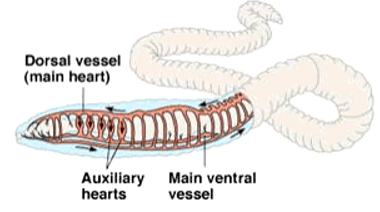
- The blood is confined to the heart and blood vessels (since closed type of circulatory system is present).
- Contractions of heart keep blood circulating in one direction.
- Blood glands are present on the 4th 5th and 6th segments.
- The blood glands produce blood cells and haemoglobin which is dissolved in the plasma.
- Blood cells are usually phagocytic in nature.

Sensory system
- The Sensory system in earthworm is composed of light, touch and chemoreceptors.
- They do not have eyes. Instead, they have light receptor cells (photo receptors) which can distinguish lights of different intensity.

- Receptor cells present in the epidermis (touch / epidermal receptors) helps to feel the vibrations on the ground.
- They possess specialised chemoreceptors or taste receptors (buccal receptors) that respond to chemical stimuli.
- All these sensory organs are present on the anterior part of the body.
Significance
- Earthworms are called ‘friends of farmers’ because when they dig burrows in the soil, make the soil porous and soft.
- This in turn health helps the plants penetrate deeper into the soil and also aids in their respiration.
- In addition earthworms convert the dead organic matter in the soil into humus which increases the fertility of the soil.
- Earthworms are commercially used in the production of vermicompost. It is also one of the commonly used baits in fishing.
